40 years to the legendary Mi-24 combat helicopter (part of 1) Creation
History The creation of a domestic armed helicopter capable of supporting ground forces with its fire weapons dates back to the 1950s. The first attempt in this direction was to equip the ATGM 9M14M "Baby" first-born M.L. Mile of Mi-1 helicopter. It was followed by a transport and combat helicopter Mi-4AV. Almost 185 Mi-4AV, equipped with a heavy machine gun A-12,7, four ATGMs "Phalanx" and NAR S-5, were first used in the Military Transport aviation, and then - in the front, which supported the Ground Forces.
Abroad, the idea of an armed helicopter was implemented in the UH-1H Iroquois helicopter, which was widely used in hostilities in Vietnam. He carried the soldiers and supported them with fire. But gradually, Western experts came to understand that the attack helicopter is only a platform for various weapons, and the landing of the landing force should be carried out by an amphibious transport vehicle, but also armed.
In our own country, the concept of a transport-combat helicopter won, supported by Defense Minister Marshal A.A. Grechko. The new rotorcraft actually had to become a flying combat vehicle of airmobile infantry. In 1967, at the pilot plant of OKB ML. Mile built two layouts and several variants of the bow of the machine, called the B-24. They reflected two main approaches to solving the problem: the first was a helicopter with a take-off mass of 7 and one TVZ-117 engine, the second with a mass of 10,5 and two TVZ-117. In the same year, the Ministry of Defense announced a competition, in which the Moscow and Ukhtomsky helicopter factories took part.
The Milev team presented the B-24 project — the future Mi-24. Kamovtsy offered Ka-25F - a modified ship helicopter. His armament included a mobile unit with an 23-mm gun GSH-23, six Phalang-M ATGM, or six UB-16 units with 57-mm NAR C-5, or aerial bombs. In the cargo compartment housed up to eight paratroopers. On the take-off mass, this car was close to the first variant of the B-24, but significantly inferior to the second in maximum speed; combat load equivalence was achieved by the extreme use of the modernization potential of a serial vehicle. These circumstances, apparently, influenced the choice of a more promising B-24 with two TVZ-117.
Speaking of B-24, it is impossible to ignore the contribution to the creation of the OKB LMZ helicopter. V.Ya. Klimov. Under the leadership of the chief designer S.P. Izotov in 1965 began the development of the TVN-117 HPN XX engine. This team in 2200 - 1960's. created the first domestic helicopter gas turbine engine TV1965-2 with power 117 hp Now Leningraders offered a new generation engine of the third generation: one and a half times more powerful and shorter than the TV1500-2, which is much lighter and more economical.
OKB M.L. Mile drew attention to TVZ-117 from the start of development and first proposed it as a power plant for the Mi-14. It is quite natural that the Millevtsy used the engine with such high technical characteristics on the B-24, where it “came to court”. Despite the large number of new design and technological solutions, the first prototype TVZ-117 LMZ manufactured in December 1966.
The model of the B-24 helicopter was armed with the GS-23 aircraft gun. On the side frames under the cargo door, a pair of anti-tank 9М17М "Phalanx-MV" was installed with the RCX. Beam holders for four bombs or NAR units were placed on a small wing without a transverse “V”.
Representatives of the Ministry of Defense, who were part of the mockup commission, suggested replacing subsonic anti-tank guided missiles with a manual targeting mode with supersonic rockets with a semi-automatic PKNS, and the GSH-23 cannon with a XNUM g. XMX high-caliber machine gun.
The full-scale development of the B-24 began in accordance with a resolution of the USSR Council of Ministers on 6 in May of 1968. On the same day, government decrees were adopted to create a TVZ-117 engine and a unified supersonic PT-RK 9-113 for an army helicopter and a self-propelled launcher. The general management of the creation of the B-24 was carried out by the general designer M.L. Miles, and after his death - the chief designer M.N. Tishchenko; technical management was assigned to the Deputy Chief Designer V.A. Kuznetsova, and the first lead designer was VM. Ol-shevits.
The profile of the main rotor blades for B-24 was selected at TsAGI, but by the time the first machine was built, this work was not completed. Then, at the suggestion of one of the OKB's leading designers, a new blade was manufactured at the Kazan Helicopter Plant: the nose with a cellular aggregate from the Mi-8 was attached to the nose blade with a spar from Mi-4 - the blades had the same NACA-230 profile. Compared to the Mi-8 blade, it turned out to be shorter by 2 and wider by 20. Such a decision was considered successful, and later a scientific substantiation was brought under it.
But over time, it turned out that the Kazan hybrid creates significantly less cravings than the Mi-8 screw. The static ceiling at B-24 in standard conditions was 0,8 - 1,3 km. This was clearly not enough in the mountains of Afghanistan, where the combat helicopter yielded Mi-8MT with similar engines for take-off and landing and traction characteristics.
In addition, the composite blade created a large pivot point. Especially significantly it increased with increasing barometric altitude and vertical overload. The power of the hydraulic boosters when performing a slide or a turn of the battle was often not enough to overcome the total effort from the hinge moments of all the blades. As a result, there was a temporary "jamming" of control in the longitudinal direction. It took the development of more powerful boosters and the gradual replacement of the originally developed power actuators by them.
A distinctive feature of the aerodynamic layout of the B-24 was the inclination of the main rotor shaft to the right of the vertical plane on 2,5 ° together with the power plant, caused by the desire to improve the accuracy of firing from a fixed weapons. This was due to the fact that the characteristic flight modes of the helicopter are hovering with a slight heel and flying with a slight slip caused by the need to balance the lateral component of the thrust of the tail rotor. Due to the inclination of the plane of rotation of the rotor, the roll and slip in all modes turned out to be minimal: roll - 0,5 - 1,5 °, slip - 1 °. For unloading the tail rotor when flying at high speed, the end beam had a relatively large area (2,8 м2) and an asymmetrical support profile. At maximum speed, the beam creates an 67% of the lateral force necessary to balance the rotor moment of the rotor.
When designing the B-24, special attention was paid to increasing combat survivability by reserving the main and backup hydraulic control systems, fire protection, installing a neutral gas system, as well as booking the crew cabin and the most important units and devices. Emergency chassis and power supplies were envisaged. The redundancy included dual control of the machine from the workplaces of the pilot and operator, and much more.
The requirements for B-24 were so high that the domestic industry could not implement them in full and on time. The cost center management, in an effort to speed up the process of creating a new machine, launched into production a prototype model B-24 (product 240) even before its layout was approved by the state commission.
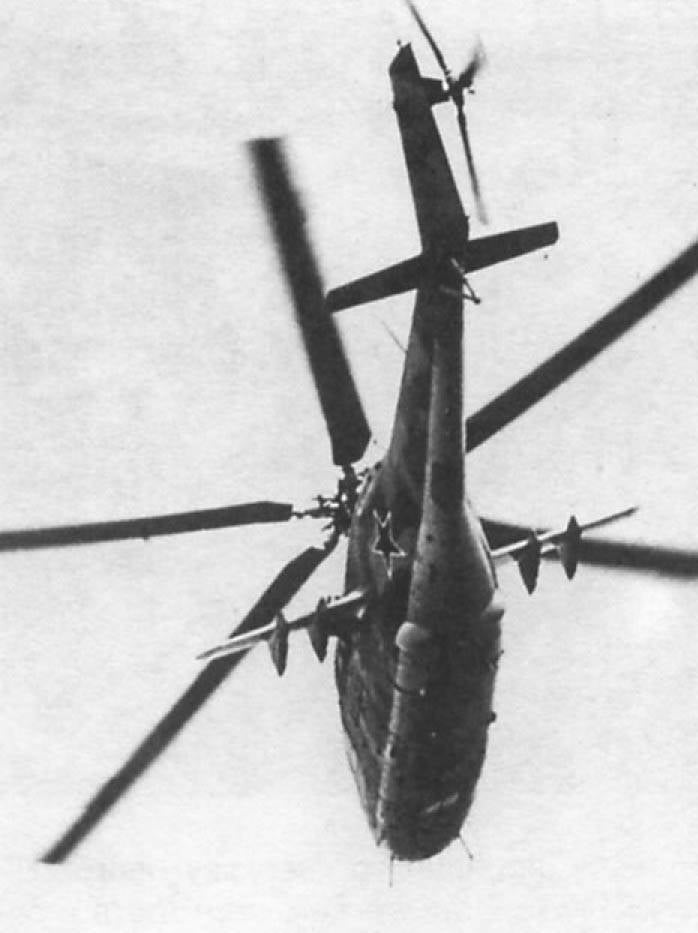
Therefore, instead of a mock-up of the commission, in February 1969 was presented the first prototype of the helicopter. A distinctive feature of this first version of the machine was the crew cabin with flat glazing, under which the weapon operator and the pilot were placed one behind the other with a shift. Representatives of the Ministry of Defense revealed a lot of flaws, made a number of comments and suggestions, but some of the flaws then detected “fit” forever in the car. The test pilots of the Air Force Scientific Research Institute and the pilots of the Lipetsk 4 pulp and paper industry and PLC agreed that the B-24 crew cabin layout does not provide the required view of the airspace.
The first B-24 flew 19 in September of the same year G.V. Alferov. In the factory tests of the first two models of the B-24, besides Alferov, the pilots G.R. Karapetyan and M.A. Material, flight mechanics V. Tarabukhin and F. Novikov. The lead flight test engineer was B.V. Meanings.
For state tests, five prototypes of B-24 were built in Moscow and five more - in 1970 at the Progress plant in Arsenyev (Primorsky Krai), where they were preparing for mass production of the new helicopter. Preparations for the release of the series, which began before the completion of state tests, were quite in the tradition of the Soviet aircraft industry: after the completion of the main volume of tests, a preliminary conclusion was signed, which gave the plant the right to start mass production. Of the Arsenyev five, the first machine was intended for life tests, and the fifth was for testing the Shturm-V anti-tank missile system.
An obstacle to the launch of the series was the lag in the development of weapons and engine systems: TVZ-117 only in December 1969 was presented to the 300-hour state resource bench tests, and the Shturm-V anti-tank missile system existed only in the form of mock-ups. In this situation, the leadership of the Air Force and the MAP made a compromise: they decided to eliminate some of the shortcomings identified by the mockup commission and during state tests later, and equip the first production helicopters with existing systems.
B-24 passed state tests from June 1970 to the end of 1972. Yu.N. flew them. Krylov, M.V. Razomazov and B.A. Shcherbina; the lead engineer was S.Kh. Atabe-kyan. During the tests revealed a lot of different "effects". In some modes, the so-called “Dutch step” made itself felt when the car, like a pendulum, began to sway along the course and roll. To eliminate oscillations, the wing was installed with reverse transverse V. At the same time, the ATGM suspension nodes were moved to its ends, because of their location on the fuselage in front of the UB-32А-24 units, unguided missiles from the blocks could collide with them during launch. Then they extended the crew cabin to ensure the normal placement of the new machine gun in the USPU-24 unit and the equipment of the 9P145 “Phalanga-PV” complex.
On hovering before leaving for a test flight to determine the accuracy characteristics of the NAR, the engines began to surge. The skill of the pilot Krylov helped to save the helicopter.
Tests on sandy soils revealed rapid wear of the blades of the first stages of the engine compressor and the leading edges of the rotor blades. The metal wiring of the latter literally before our eyes turned into an almost transparent shell and deformed, acquiring a shape far from the calculated one. All this caused a lot of trouble for designers.
Gradually, the main shortcomings of the car were eliminated and it was considered suitable for use under the designation Mi-24. A special role in the implementation of the idea of a combat helicopter in our country belonged to the Commander-in-Chief of the Air Force, PS Kutakhov. Under his direct leadership, all the modifications of the Mi-24 were given a start, he was well aware of the combat and flight characteristics of the vehicle, considered it his brainchild, and at times reported on the helicopter himself at shows of aviation technology to the country's leadership.
In 1975, on the lightweight version of the Mi-24 under the designation A-10, the crew G.V. Rastorguyeva set a number of women's world record for a climb, and three years later, on September 21, 1978, the test-pilot G.R. Karapetyan set a world speed record - 368,4 km / h.
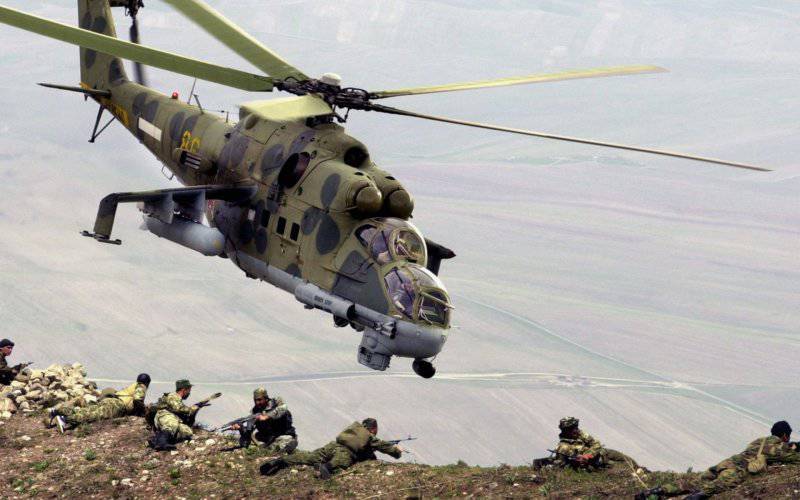
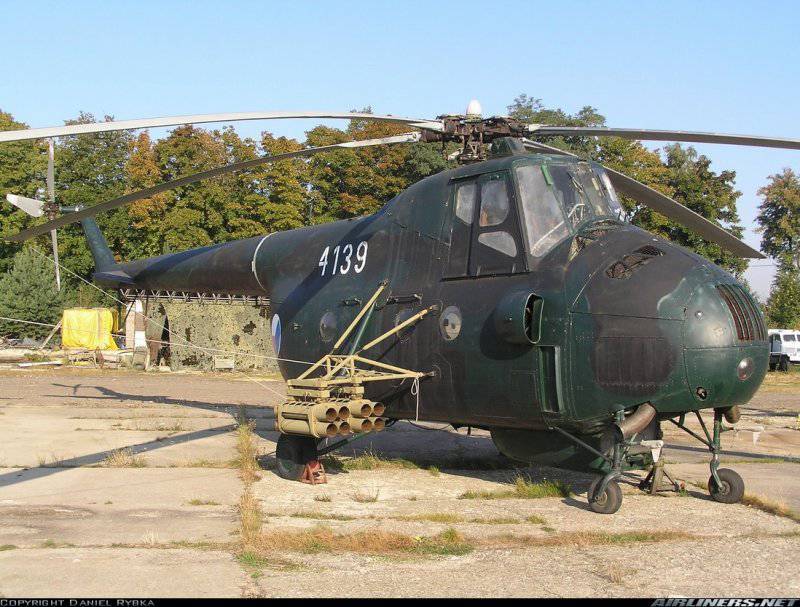
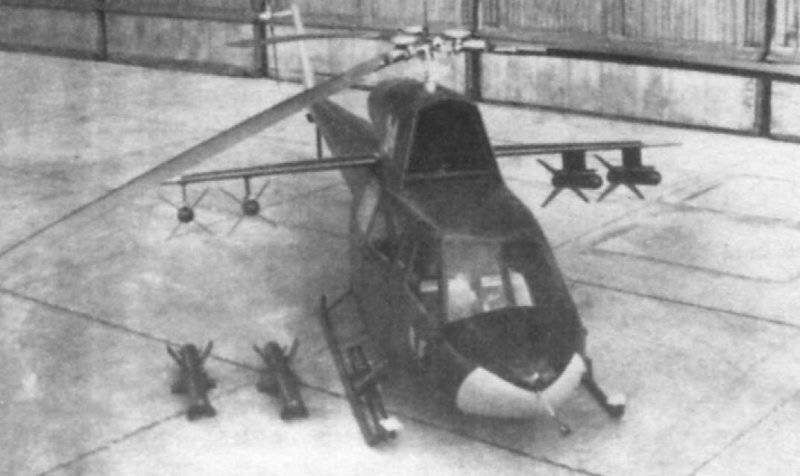
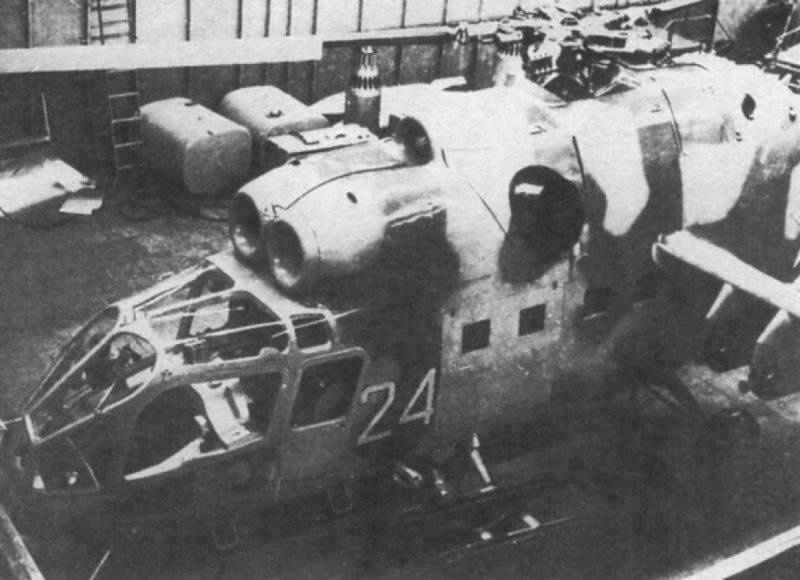


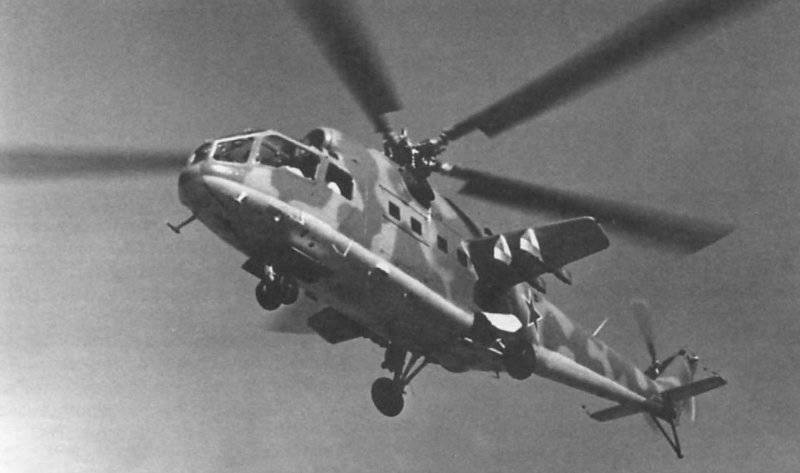
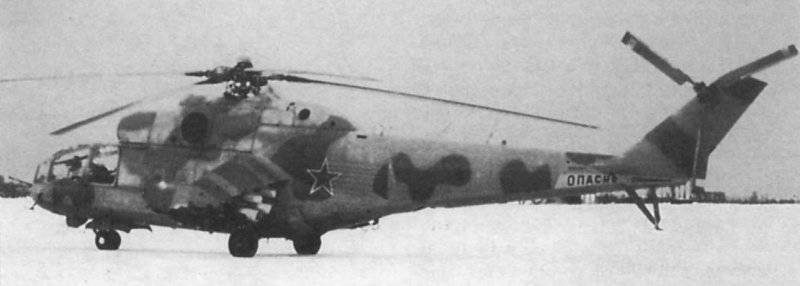
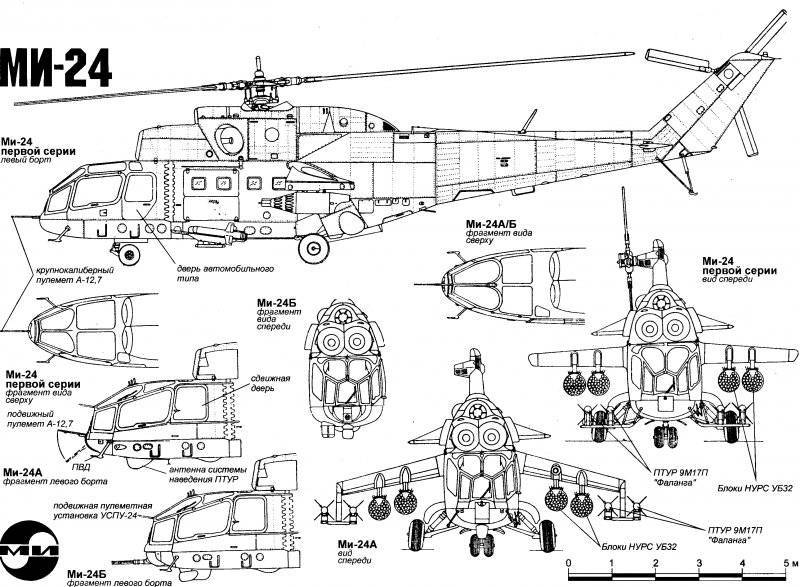
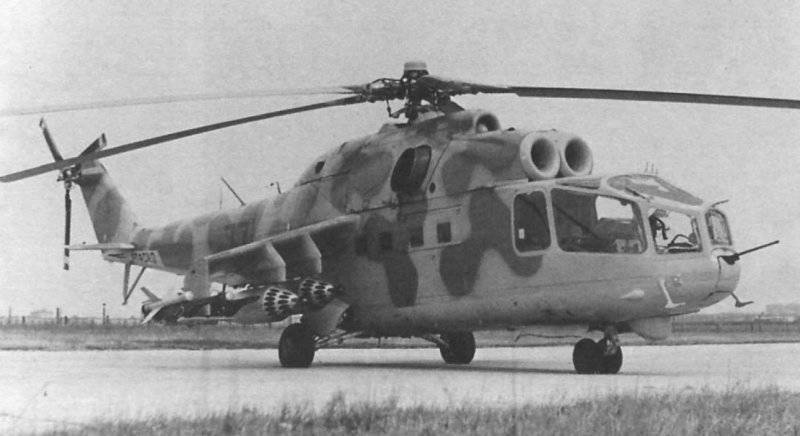
Information